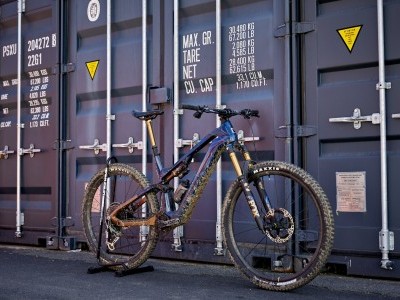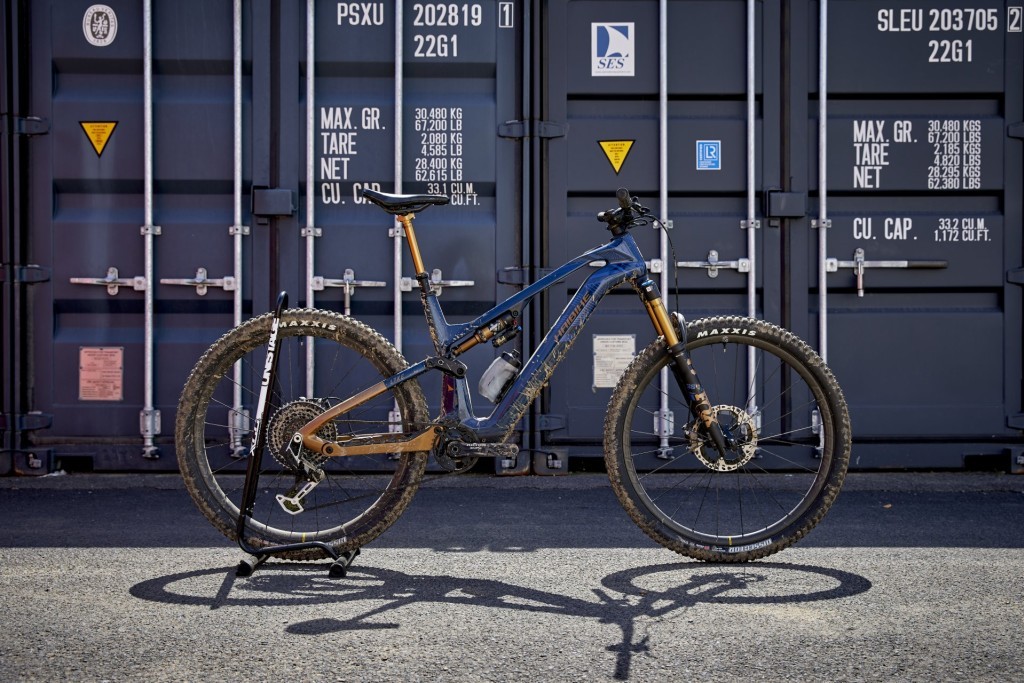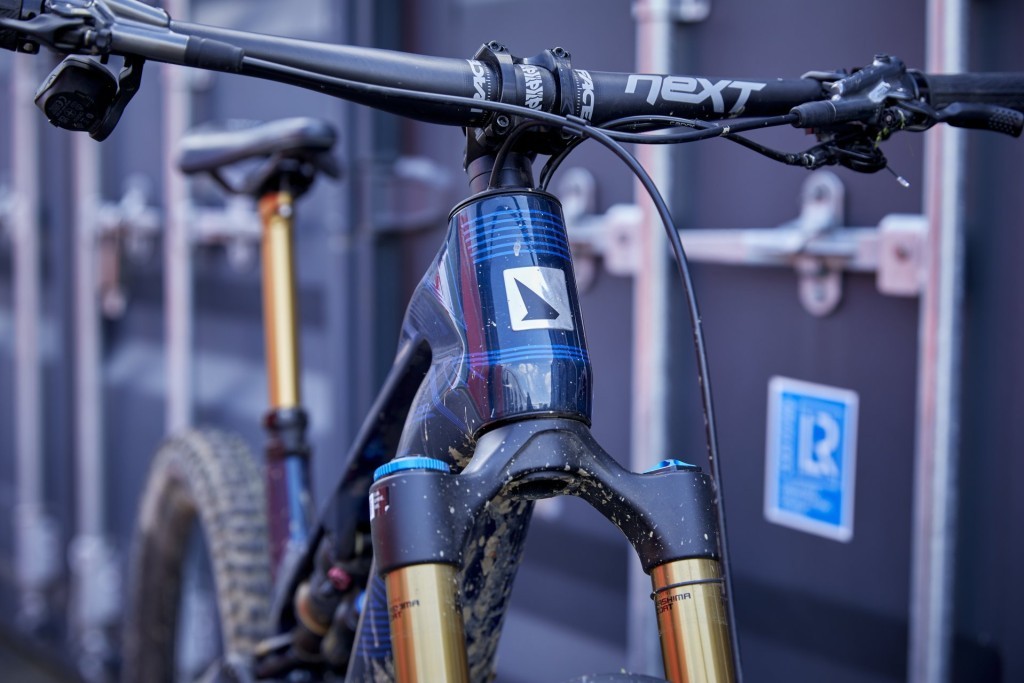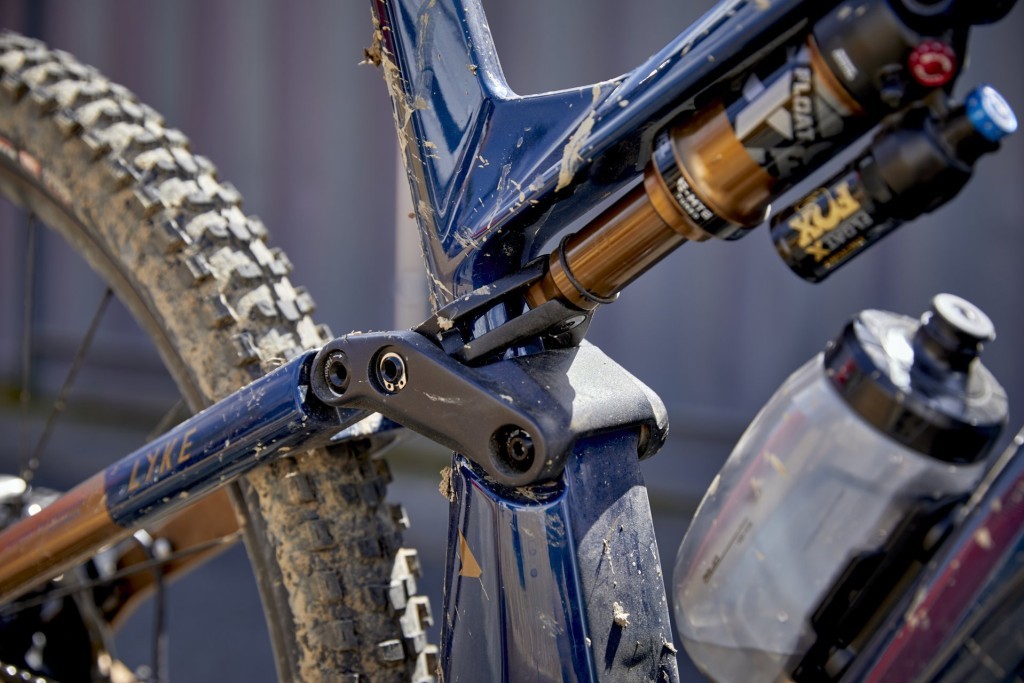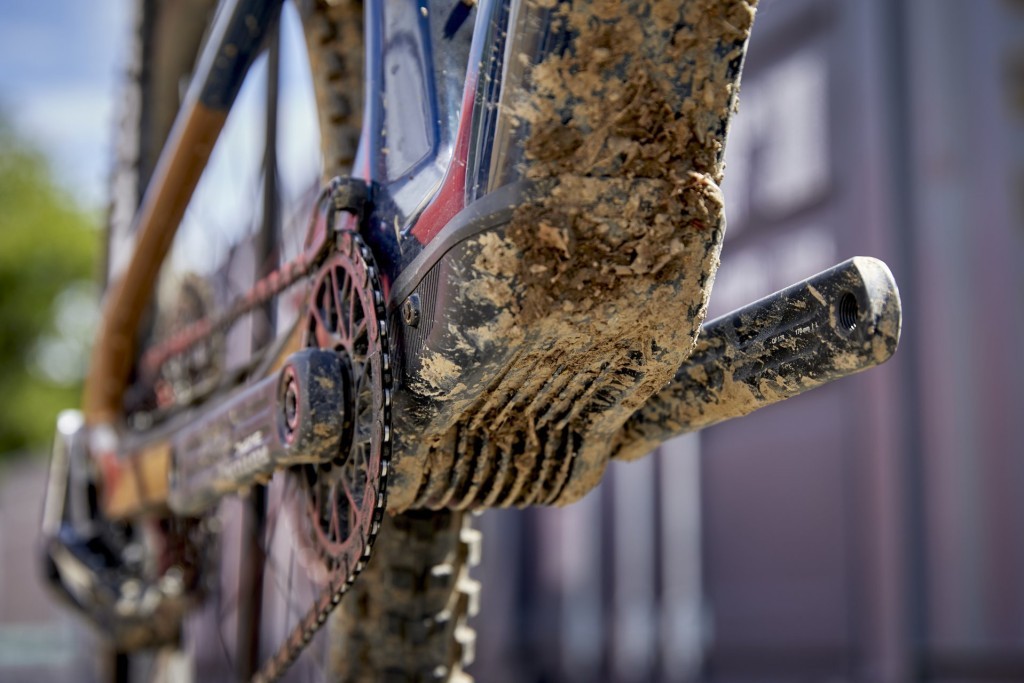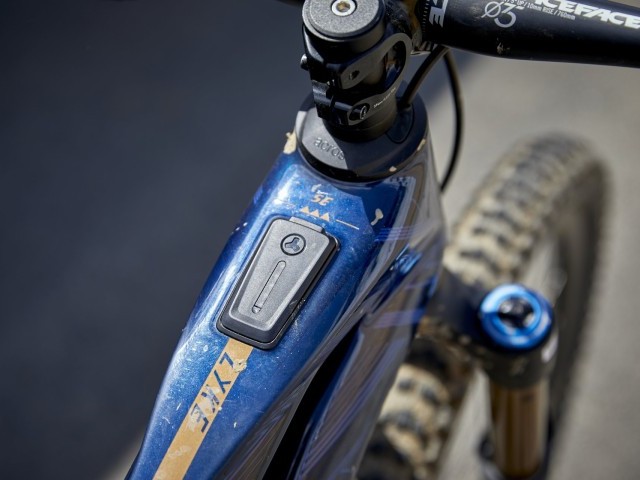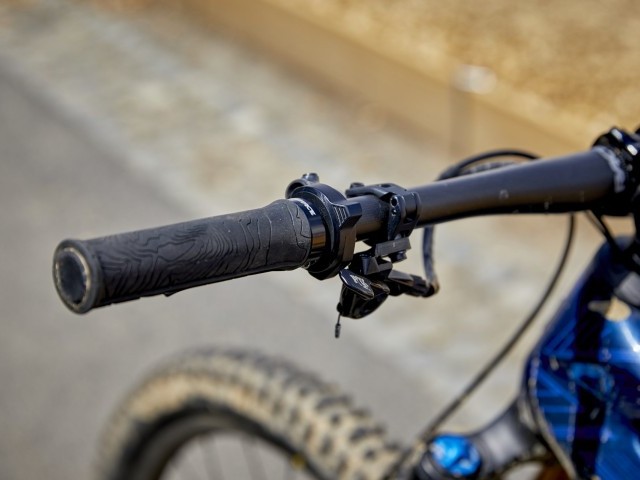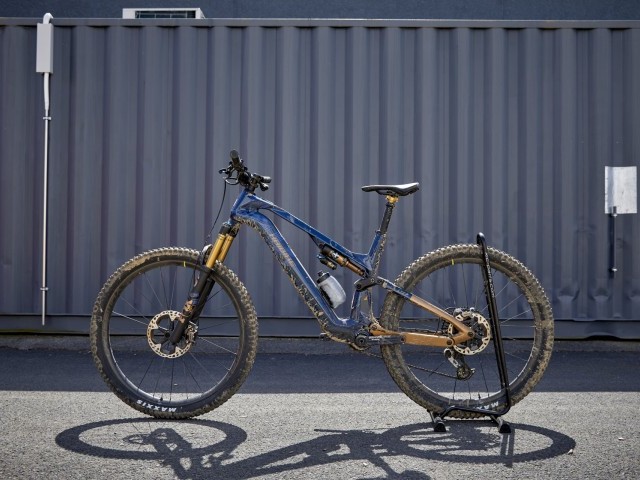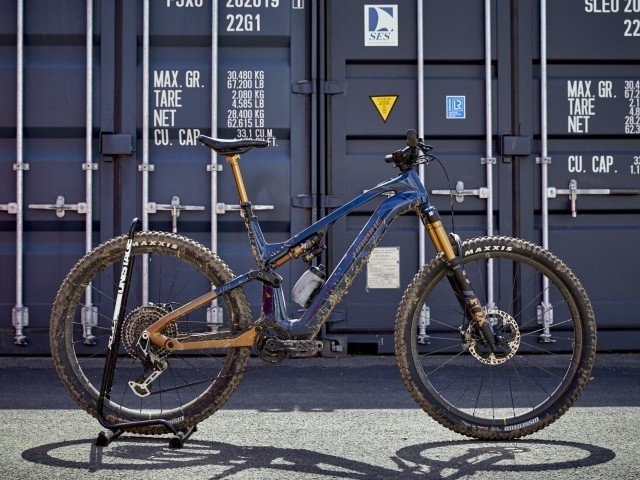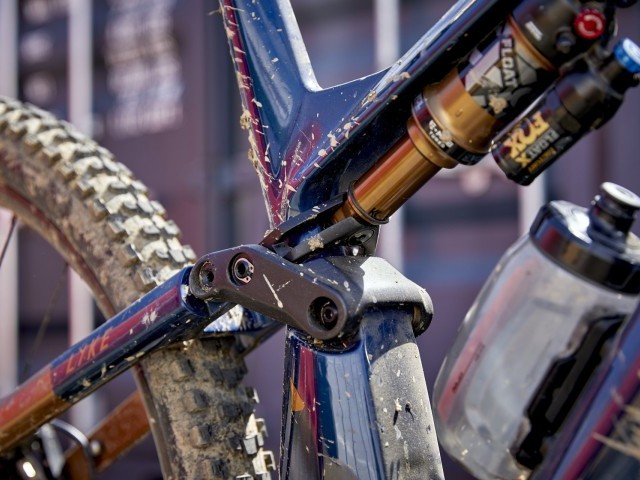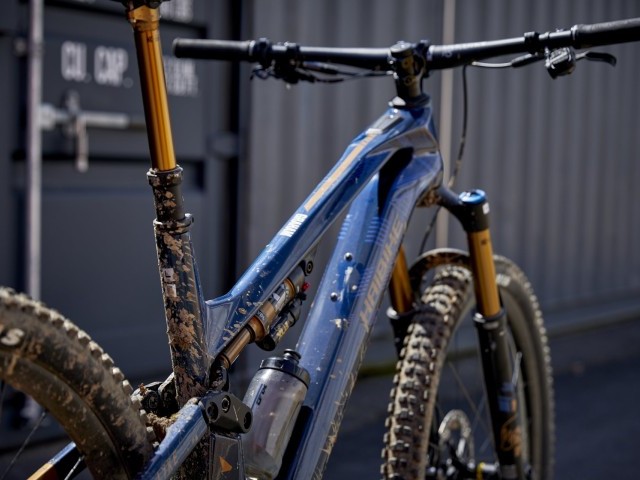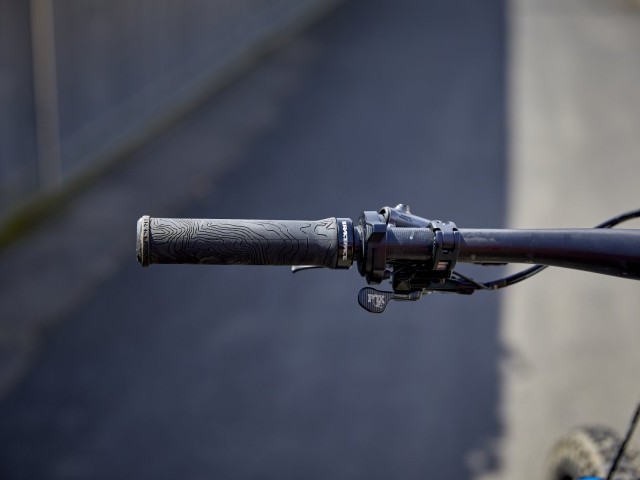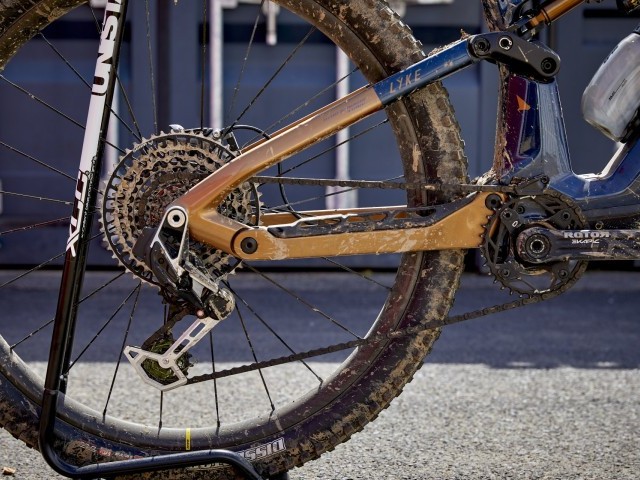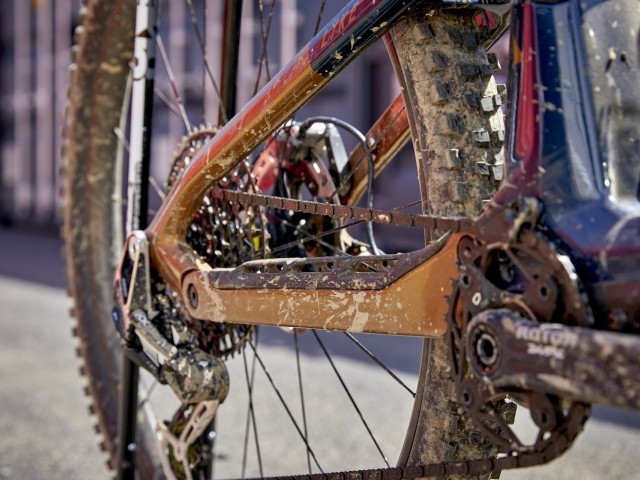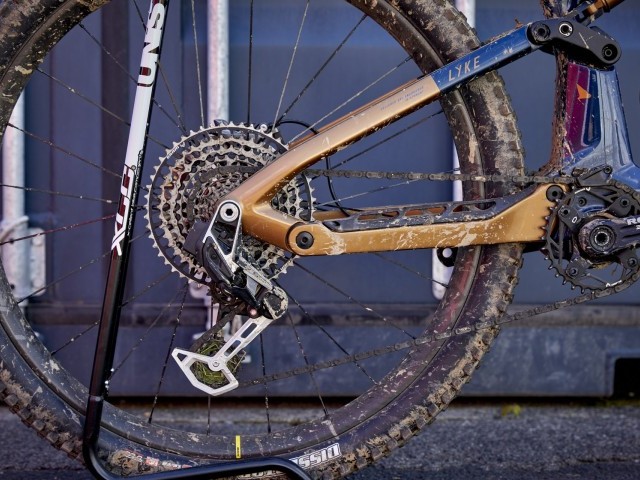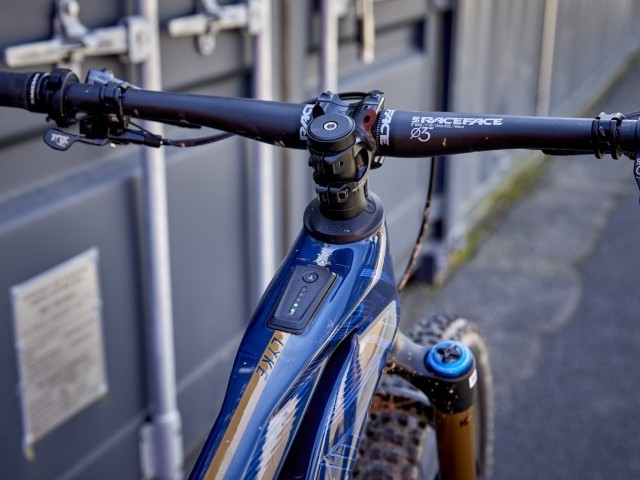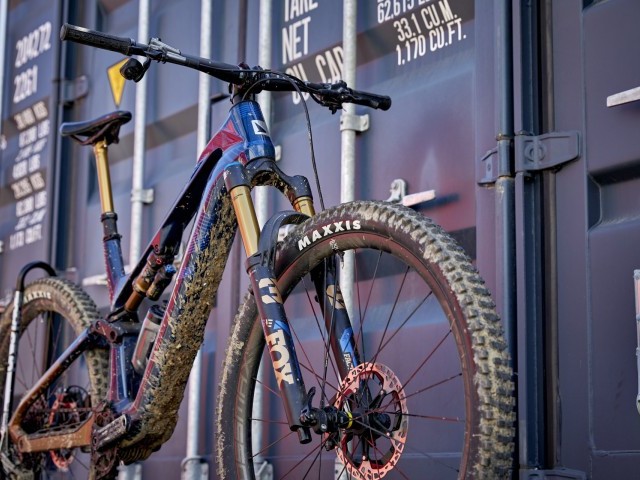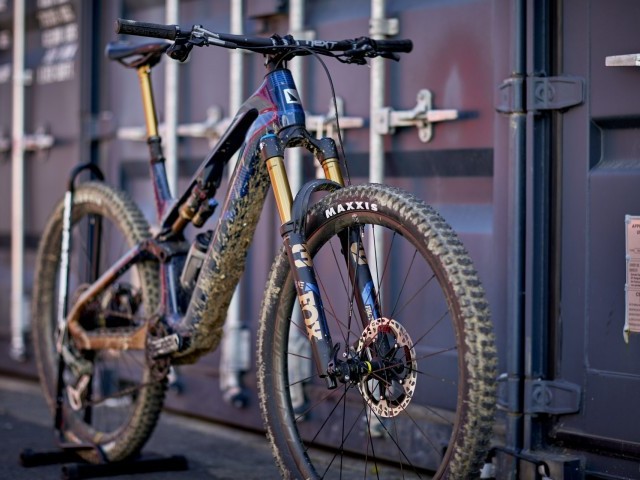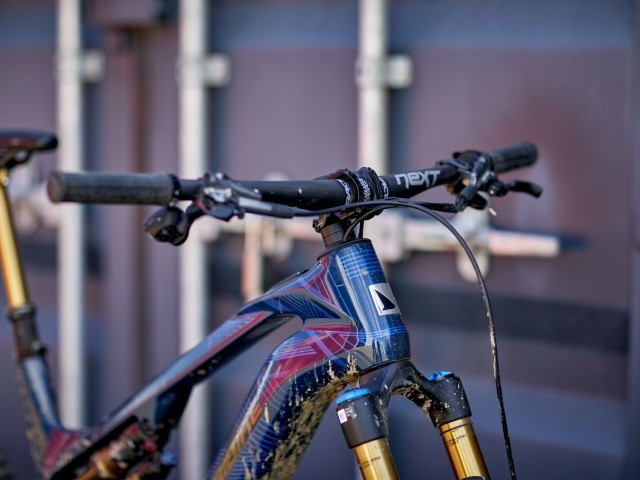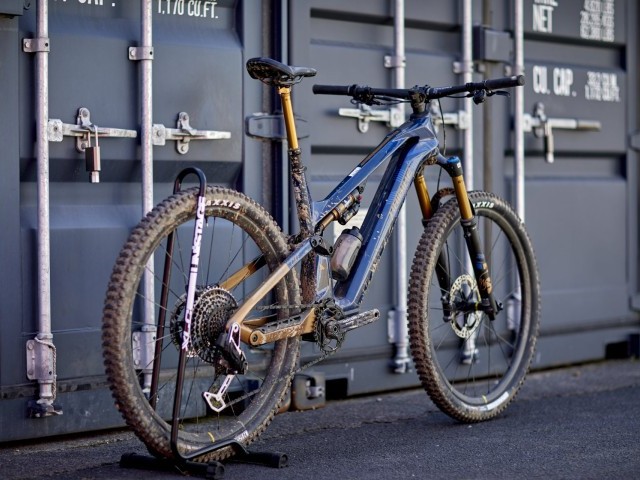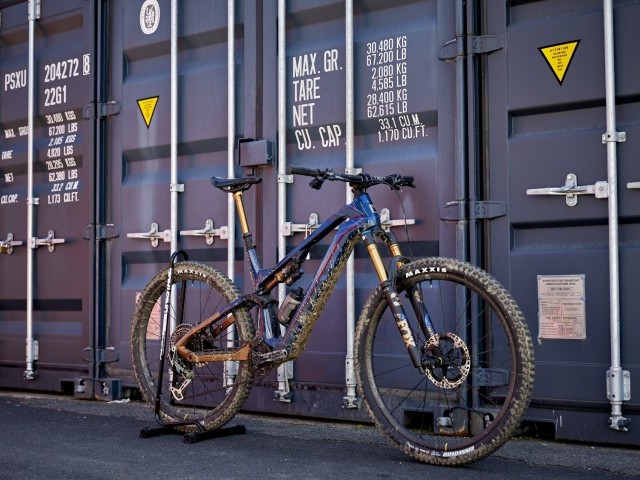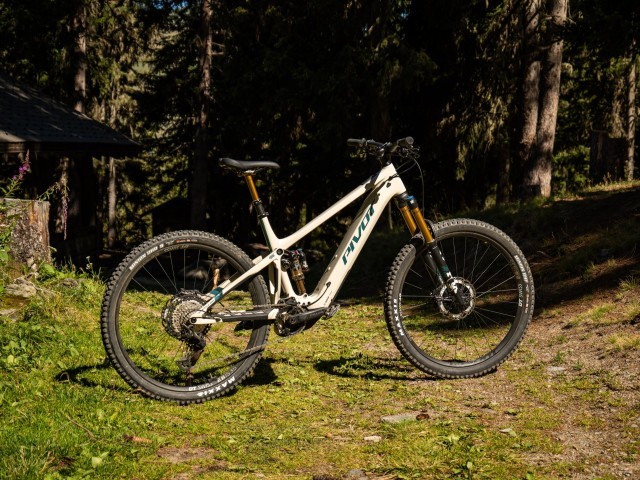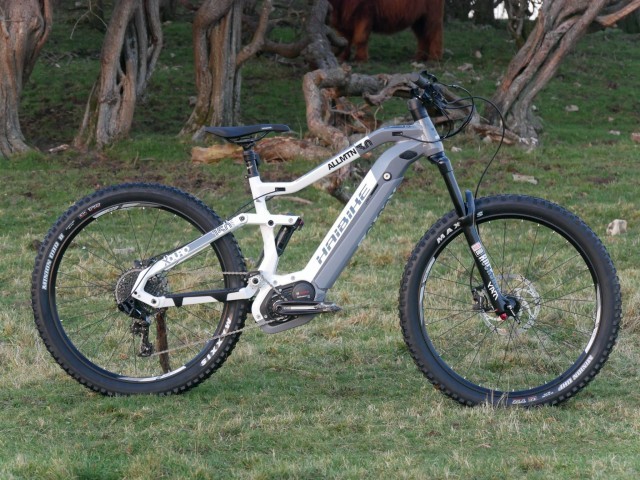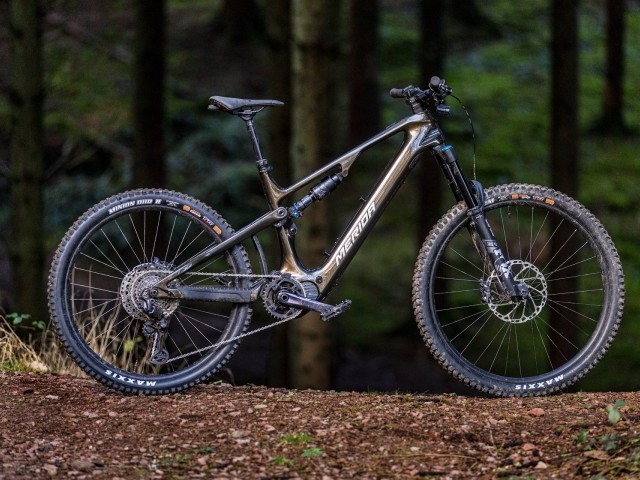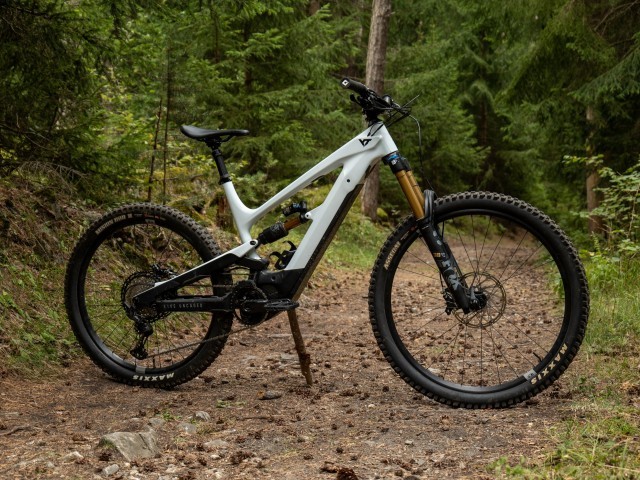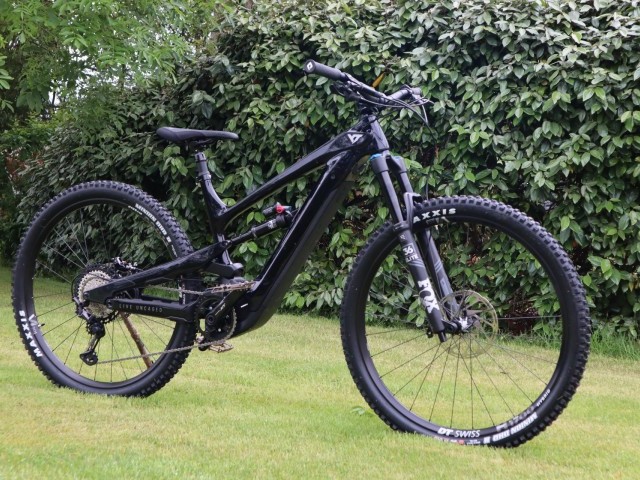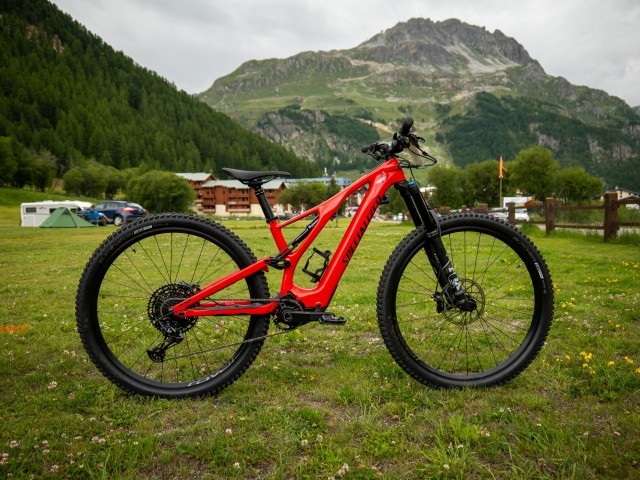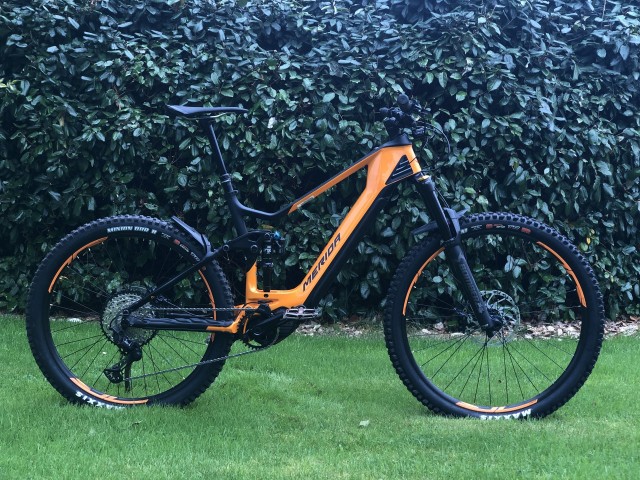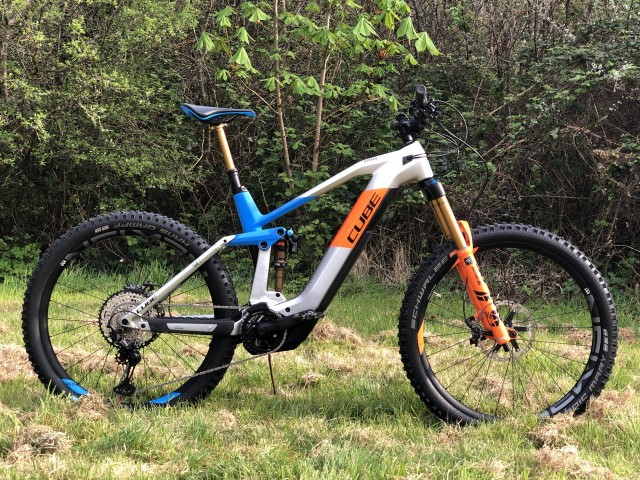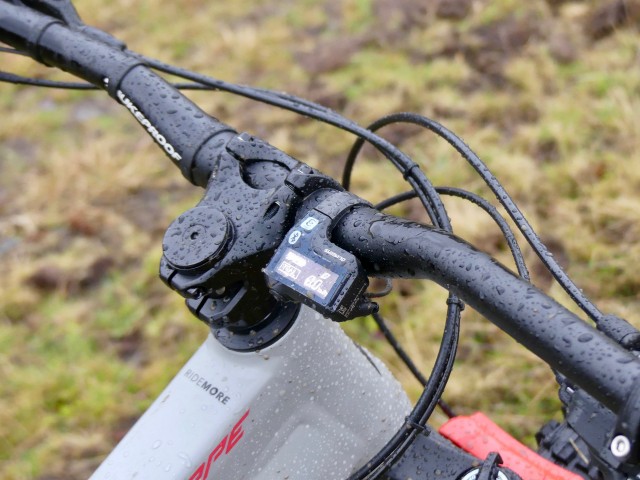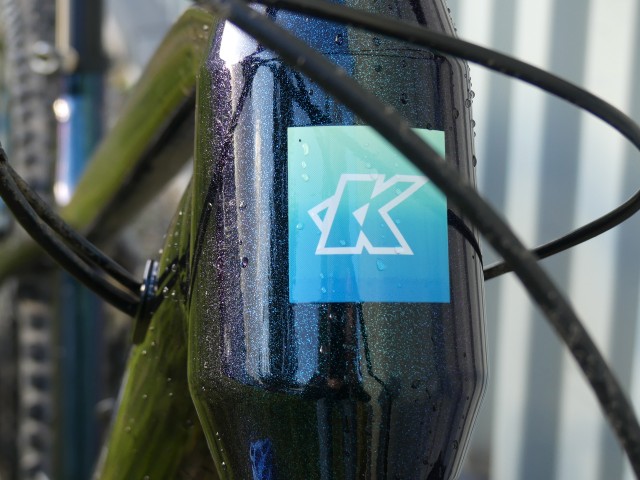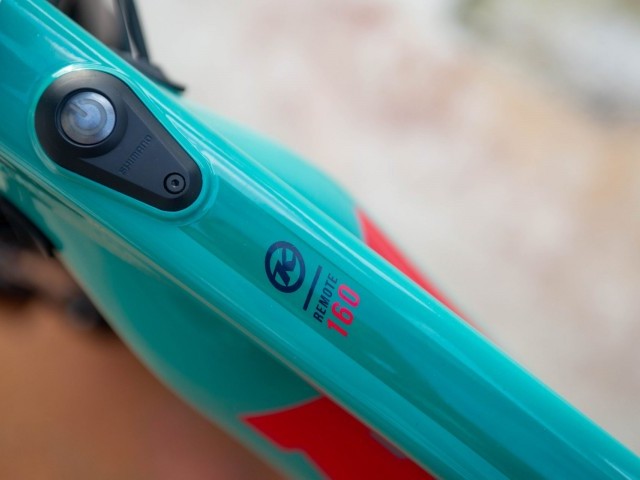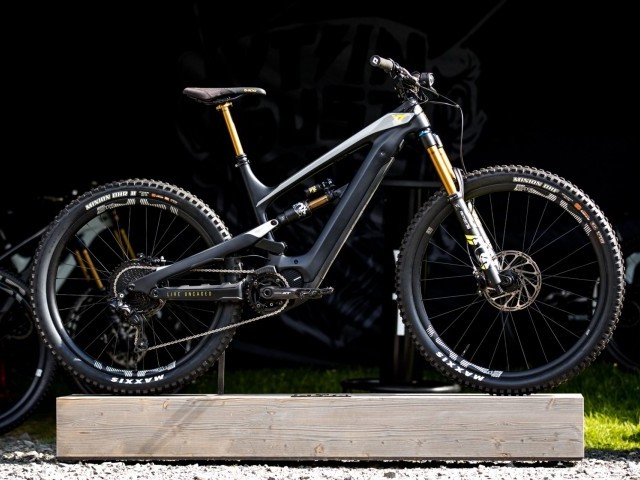The Lyke is Haibike’s lightweight 140/140mm travel E-MTB. Equipped with the Fazua Ride 60 motor, 430Wh battery and a carbon frame, it is one of the lightest machines on the market. Price: GBP 9999 (starting from 5899 GBP)
Buy Electric Bikes on
The product
The Lyke is available at three different price points, but it is important to note that frame and electrical components on all three bikes are the same. The main changes are on the component specs, shaving off some weight and improving overall performance.
When we look at the frame, there is a full carbon frame with 140mm of travel and a lot of cool technology. The wishbone style rocker helps isolate any sideways flex towards the rear damper, this greatly improves the way the suspension works out on the trail and increases bearing and bushing life in general.
Cable routing is done internally through the stem/headset area, making a tidy look and eliminating any frame damage due to cable rub. Also the chainstays come equipped with a thick and well designed rubber protection to reduce chain slap and create a really silent ride.
Geometry wise, we see a 65 degree head angle, 450mm chainstay length and a 479mm reach in the size Large. Nothing extreme, but roomy and slack enough to handle the modern day demands of the riders. With a nice and roomy standover height, you have the option to size up or down depending on your top tube length preference. With 4 sizes to choose from, there are enough options for 99% of the riders out there.
The Fazua Ride60 system is very sleek. The controls on the handlebar are so well integrated that I had to look twice to see where they are. To change between modes, there is a ring shaped switch which is very intuitive in use. . The display is integrated in the top tube and very minimalistic. Color coded led lights show how much battery life is left and there is a USB-C connection in case you want to charge your phone, lights or GPS device. In terms of weight, the Ride60 puts 4.2 kilograms to the scale for motor, interface and a 430Wh battery which is quite impressive. Important to notice is that it puts out 60Nm of torque too. Not as much as for example a Bosch CX (85Nm) but more than enough to give you a boost over technical terrain.
Cool feature is also the Fazua app that lets you adjust the power output to your liking. You can either tone it down to save some battery for those longer rides or boost it up for shorter laps with more technical climbs.
What makes the Haibike Lyke unique is that the battery unit is removable. In fact, it is held in place with only two allen bolts and can be removed in less than 5 minutes in the workshop or even mid ride on the trail. The process is simple: remove one bolt to release the protective cover, remove the wiring cable and the second bolt that holds the battery in place. Slide out the battery, slide in the replacement and reverse the process above. Simple, quick and effective. Nice touch about this design is that there is no mud collecting battery cover in the downtube, or a weakened downtube due to a cutout. The system is above all 100% rattle free too!
Out on the trail
The best part of bike testing is undoubtedly the ride. Setup was done quickly and getting used to the Fazua controls was easy and intuitive. The motor has plenty of oomph when in the ‘Rocket’ mode, but even in the ‘River’ mode you could feel plenty of support. First thing that I noticed was how silent the motor was. Unlike many other makes out there, you could barely hear it at all. A major plus in my opinion as I don’t go out in nature to hear buzzing sounds other than the bees.
After the first climb it was the moment of truth in terms of handling. Many E-MTB’s out there are 22kg plus and feel very planted, but sluggish and hard to maneuver when things get a bit more technical. With just over 18kg though, the Lyke is not far off the mark of some of the heavier freeride and downhill bikes out there. Few meters into the trail my smile kept on getting bigger, and it didn’t take long to forget I was on an E-bike altogether. Cornering, jumps and bunny hops, easy peasy and very similar to any regular ride out there.
What about hike-a-bikes? Good question. As many of the best Alpine trails require a little push or carry and for those into exploring trails, the downsides of a 25kg E-bike are obvious if the trail is not as rideable as you hoped. So the answer is, yes. Yes you can actually do some hike-a-bike stuff with the Lyke and although slightly heavier than my regular ride it’s quite doable. Another big plus for the adventurers amongst us!
Next up to assess is of course the range. With a 430Wh battery you can’t (and shouldn’t) compare with any full sized battery machines out there. But I can give you some numbers that should give you a good indication of what is possible with the Lyke. For example the media ride we did was a full on sprint fest with a group of pedal happy journo’s, engineers and marketeers. In about 3 hours we depleted the battery, doing almost 900 m of vertical over close to 40km. Bear in mind that I weigh a good 90kg and spend the majority of the time in the Turbo/Rocket mode and you can quickly see the potential. If you’re a lighter rider I am sure you can push that to 1100/1200m on a ride using all the different modes, and closer to 1800m of vert if you use the battery wisely in eco mode. Impressive to say the least and keep in mind that if you have a second battery, your world really opens up.
Verdict
The Lyke is a very capable singletrack slayer that handles above its class. The light weight practically makes it handle like a normal bike and the 140mm travel felt a lot more on the trail. The top of the range model has a hefty price tag, but if you jump one model below you pay 6799 GBP for the same frame, electrical setup and a Fox/Shimano component kit.
This bike is for the rider that is looking for some electrical assistance but doesn’t want to compromise the ride feel.
Buy Electric Bikes on
This review was in Issue 76 of IMB.
For more information visit HaibikeRelated
By Jarno Hoogland
Jarno's life has revolved around two wheels ever since he swung a leg over his first BMX at age 4. After a BMX and DH racing career, he moved on to work for bike shops, distributors and brands before ending up in the editors seat at IMB. Based in the ultimate testing ground in the Swiss mountains, he runs his guiding operation and makes sure every IMB issue is filled with top notch content.

